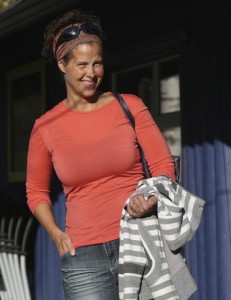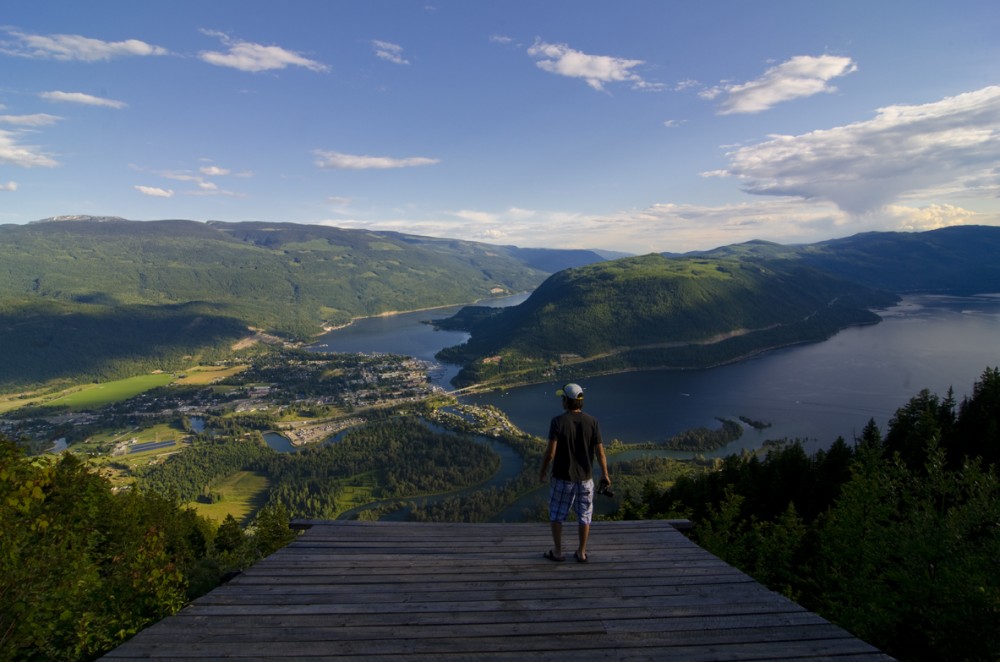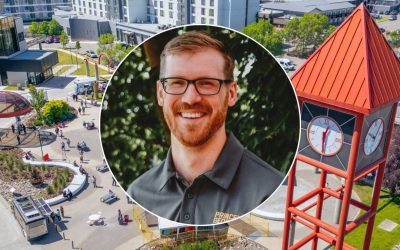What if every cabin in your destination was a visitor centre? Shuswap Tourism knows how that might look.
The Columbia-Shuswap Regional District of British Columbia is home to Shuswap Lake, a Canadian houseboating mecca and outdoor adventure destination. The area (commonly known as “the Shuswap”) boasts small-town comforts and natural beauty that attracts visitors seeking a lakeside cabin or cottage getaway.
The Shuswap also draws many seasonal summer residents and homeowners who have strong ties to the region. These part-time residents needed to learn how local tourism experiences are changing and improving year on year, so Shuswap Tourism stepped in with an innovative campaign called Stock the Cabins, which aimed to turn locals into tourism experts and passionate advocates for the destination.
Carmen Massey is the owner of Reach Marketing and helped design the Stock the Cabins campaign for Shuswap Tourism. We spoke with Massey to find out why this advocacy effort is important, and what other destinations can learn from it.
Destination Think: Can you describe the Stock the Cabins campaign?
Carmen Massey, Owner of Reach Marketing, for Shuswap Tourism: Stock the Cabins is a campaign we developed in the Shuswap to reach visitors who would not normally engage with traditional visitor services, and seem to be missed in our messaging.
The campaign is aimed at getting Shuswap Tourism tools (Visitor Guide, experience guides, maps) into homes and cabins throughout the Shuswap. We want to reach the visitors who consider themselves local experts but don’t actually live in the community year-round. These people have visited or lived part-time in the Shuswap for a long time, but haven’t actually engaged in the community to know what is new or developing as experiences on the ground. We also want to reach the visitors who assume the local person they are staying with knows all about the Shuswap, and that they don’t have to seek out any visitor information for themselves.
How did this campaign begin?

Carmen Massey, Owner of Reach Marketing, for Shuswap Tourism
Stock the Cabins began as we asked ourselves, “Who is our visitor?” and “What do they want to know?” The visitor’s main question is always: “What is there to do around here?”, and we wanted to reach the people asking it, and answer the question effectively.
Over a few seasons, we repeatedly circled back to the seasonal resident visitor, and our local resident homes, which are often filled to overflowing with guests all summer long. Guests who are visiting the homes of Shuswap residents (whether part-time or full-time) don’t often go to the Visitor Centre to see what else they could do while they are staying with grandma and grandpa, for example. These visitors believe that if there is something worth exploring locally, the locals will know about it and tell them. However, we were convinced the locals didn’t actually know all the things visitors could enjoy in the Shuswap, and thus couldn’t share important information with their visitors.
We tested the market anecdotally to see if our cabin owners and local residents had Shuswap experience guides in their homes. We found that our bed and breakfast owners often did have this information, but most of the locals did not. In fact, locals were delighted when we offered them the Vacation Planner (full of top ten lists of things to do throughout the region, and itinerary ideas around various experiences) and asked if they could take a few for their visitors.
The hiking guide was highly attractive, as visitors are often looking for something to do other than sit on the beach. The cycle touring map also generated high interest, as people recognized that it is not only an excellent guide, but a wonderful road map of the region, featuring viewpoints, picnic areas and places of interest throughout the Shuswap.
Once we decided that there was enough evidence to support reaching out to our local residents with information and guides, we asked ourselves how we could best achieve our goal. We considered a door-to-door campaign, but we couldn’t afford this approach.
How did you distribute the guides?
In 2014 and 2015, we began to use physical presence at events locally as a chance to promote the Shuswap Tourism marketing materials and experience guides to locals. When people would say, “I don’t really need this guide, I’m a local,” or “You need to save these for the visitors,” or “This is really great, but I don’t have company coming until August,” we took it as an opportunity to encourage them to put it in their guest room or on their coffee table for visitors to use. Residents happily began to take the guides and stock their cabins.
In the summer of 2016, we expanded the program to an on-location presence at DeMille’s Farm Market, a key stopping point for residents, cabin owners and visitors. Most Fridays, Shuswap Tourism would set up a tent in the parking lot and spread the word about things to do in the Shuswap, encouraging people to take our guides and maps to use and share.
In 2016 we also began a targeted and systematic process of stocking our main guides in key distribution locations where we know that visitors and residents (with visitors of their own) would go to stock up on supplies, such as groceries. We made a list of these places and stocked the locations throughout the summer with our guides. Thousands of guides disappeared into local homes and cabins through this process.
Shuswap Tourism often sponsors local events, and when we get the chance, we attend the event in person with our tent and marketing display. We reach out to the locals at these events and educate them on what tools we have for visitors, telling them the same Shuswap story we tell outside the region. We fill up their Shuswap bag with guides and maps they can use to have even better experiences with their guests.
This is our way of mentoring the locals to tell the same story to their guests as we are telling people in our marketing outside the region.
Why was this project effective?
This project has been effective because it is answering the burning question: “What is there to do around here?” In addition, we are providing the locals with tools they can share with their own visitors, which turns our locals into true experts. By creating micro-visitor centres, we are inspiring better experiences for visitors and locals alike.
Why is tourism advocacy from residents valuable to your destination?
A significant portion of our Shuswap homeowner population is part-time or seasonal. In the South Shuswap, for example, close to 40% of our summer residents do not live here in the off-season. Most of these part-time residents have visitors of their own when they reside in the Shuswap. Also, many of the local, full-time residents have significant levels of visitation by friends and family throughout the year.
In general, people take for granted that the local residents know all there is to know about the place they live. But by providing quality guides and maps to individuals, we are able to get information into the hands of hundreds, if not thousands of visitors who would otherwise not discover the variety of interesting activities, events, trails, stores, beaches, parks, etc., there are to enjoy in the Shuswap.
What’s one thing you’ve learned from this project that you think other destinations can learn from?
Visitors often consider local residents to be subject matter experts on the destination, but many residents don’t actually consider themselves to be the expert. Residents can be as eager to find out more about their own community as their guests are. They want to explore and discover the region alongside their visiting friends and family.
Destinations can provide value to both visitors and residents by educating them and turning them into destination advocates.
Has your destination had success in creating advocates? Please leave us a reply below.
Related reading: Advocacy, content and partnerships: Find out how Destination British Columbia plans to become the most recommended destination in North America









As Destination Southern Highlands regional tourism organisation we have had great success with our award winning Visiting Friends & Relatives Program ‘My Southern Highlands’ over the past 8 years converting our 46,000 residents in proactive tourism advocates.
Thanks for sharing, Steve. We love seeing examples that engage the community like this.
Steve, Could you please send me your information. I would like to chat about your program.
In the Iles de la Madeleine, an archipelago located in eastern Québec (Canada), every spring, we distribute the Official Tourist Guide to all the residents (via the Post Office).
This is appreciated by the locals and a great way to «spread the good news» before summer.